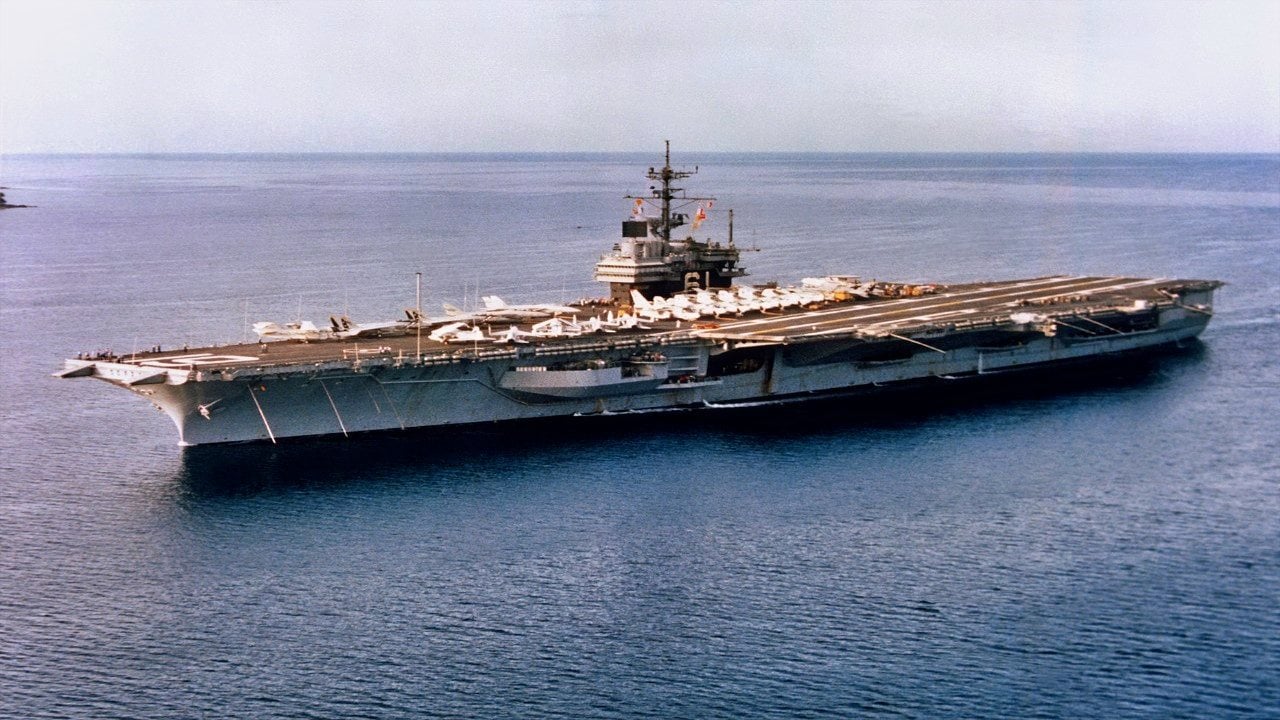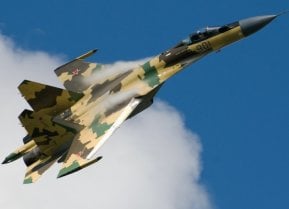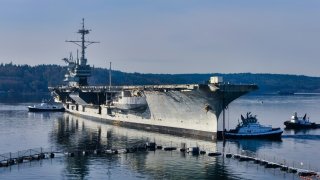USS Ranger Deserved Better: A Look at Its Illustrious Aircraft Carrier Career
The USS Ranger (CV-61), a Forrestal-class aircraft carrier, had an impressive service history from 1957 to 1993. An evolution from the Essex class, the Forrestal class bridged the gap to nuclear-powered carriers, bringing significant upgrades in size, capability, and power.
Summary and Key Points: The USS Ranger (CV-61), a Forrestal-class aircraft carrier, had an impressive service history from 1957 to 1993. An evolution from the Essex class, the Forrestal class bridged the gap to nuclear-powered carriers, bringing significant upgrades in size, capability, and power.

-Powered by four Westinghouse geared steam turbines and eight Babcock & Wilcox boilers, the Ranger could reach speeds of 33 knots and carried up to 90 aircraft.
-It played key roles in the Vietnam War and Operation Desert Storm. Despite its honorable service and even a notable presence in films like Top Gun and Star Trek IV, the Ranger was decommissioned in 1993 and scrapped in 2015 after failed attempts to preserve it as a museum.
The USS Ranger (CV-61) Aircraft Carrier Deserved Better
The Forrestal-class aircraft carrier is a sometimes forgotten contribution to the evolution of America’s fleet. Like the Lexington class, the Forrestal was a transition from one point in the development of the Navy’s carriers to the next.
Whereas the Lexington class was a hybrid of the battleship and the flattop, the Forrestal was an expansion of the Essex class. While not nuclear-powered as future carriers would be, it was a major upgrade in terms of size, capability, and power. The lessons learned from this class of carriers would be directly applied to the next generation of large, nuclear-powered flattops.
USS Ranger (CV-61) is of particular note. This Forrestall-class boat had an incredible lifespan, ranging from 1957 to 1993.
The Specifications of this Legendary Boat
Ranger was powered by four Westinghouse geared steam turbines with eight Babcock & Wilcox boilers, and it could reach a speed of 33 knots. For such a large warship, this baby could fly.
Ranger carried a complement of 3,500 officers and enlisted men. She had a displacement of 81,000 tons and was designed to carry up to 90 aircraft, including fighters, bombers, and helicopters.
In terms of onboard weapons, the Ranger could carry RIM-7 Sea Sparrow missiles, Phalanx CIWS, and 5-inch/54 caliber Mark 42 guns. The ship also had an advanced radar and sonar system for detecting and tracking enemy ships and aircraft.
CV-61 played a significant role in several conflicts, including the Vietnam War and Operation Desert Storm. In Vietnam, Ranger launched numerous air strikes against targets in North Vietnam, and its aircraft provided close air support for ground forces fighting in the jungle. In Operation Desert Storm, USS Ranger launched air strikes against Iraqi targets including airfields and military installations.
USS Ranger’s Shipboard Integrated Navigation and Control System allowed for more precise navigation and control of the ship, improving its operational effectiveness.
Admiral, There Be a Ranger Here!
This legendary boat even starred in the 1980s superhit film Top Gun, although it was not credited. While the story of Top Gun takes place on USS Enterprise, that warship was on deployment when the film was being made. So the Navy allowed filmmakers to use USS Ranger for interior shots.
Its cinematic prowess doesn’t end there. In Star Trek IV: The Voyage Home, when Captain James T. Kirk’s crew is stranded in 1980s San Francisco while on a mission to bring two humpback whales to their own century, our heroes must break into the U.S. Navy aircraft carrier USS Enterprise.
As happened with Top Gun, the real Enterprise was on deployment when filming started. The Navy allowed the non-nuclear USS Ranger as a stand-in.
A Truly Unique Flat Top
This was one of the first aircraft carriers in the Navy’s fleet designed with an angled flight deck. The new feature allowed for simultaneous takeoffs and landings, increasing the warship’s operational efficiency and flexibility.

After decades of honorable service to the United States, the Navy decided it was time to put Ranger out to pasture. She was decommissioned in 1993 at the Puget Sound Naval Shipyard. She met her ultimate end by being converted into scrap metal in Brownsville, Texas, where that metal was sold for next to nothing back in 2015 after failed attempts to convert Ranger into a museum ship.
Author Experience and Expertise: Brandon J. Weichert
Brandon J. Weichert, a National Interest national security analyst, is a former Congressional staffer and geopolitical analyst who is a contributor at The Washington Times, the Asia Times, and The-Pipeline. He is the author of Winning Space: How America Remains a Superpower, Biohacked: China’s Race to Control Life, and The Shadow War: Iran’s Quest for Supremacy. His next book, A Disaster of Our Own Making: How the West Lost Ukraine, is due October 22 from Encounter Books. Weichert can be followed via Twitter @WeTheBrandon.
All images are Creative Commons or Shutterstock.
From the Vault
Russia Freaked Out: Why the U.S. Navy 'Unretired' the Iowa-Class Battleships
Battleship vs. Battlecruiser: Iowa-Class vs. Russia's Kirov-Class (Who Wins?)


